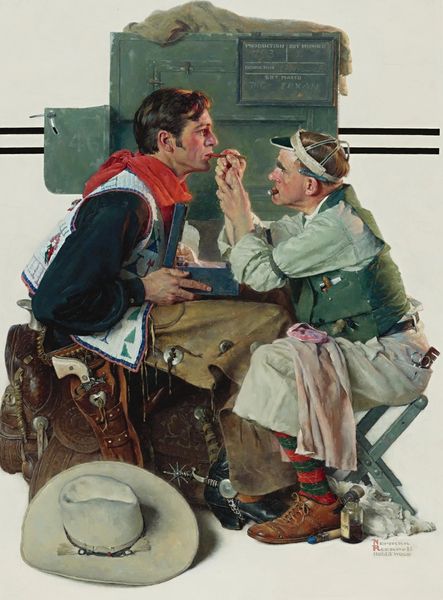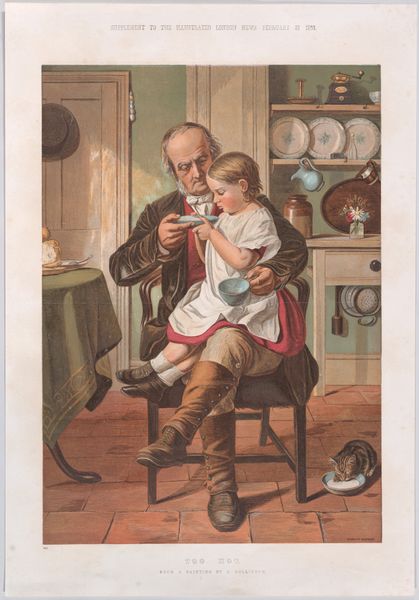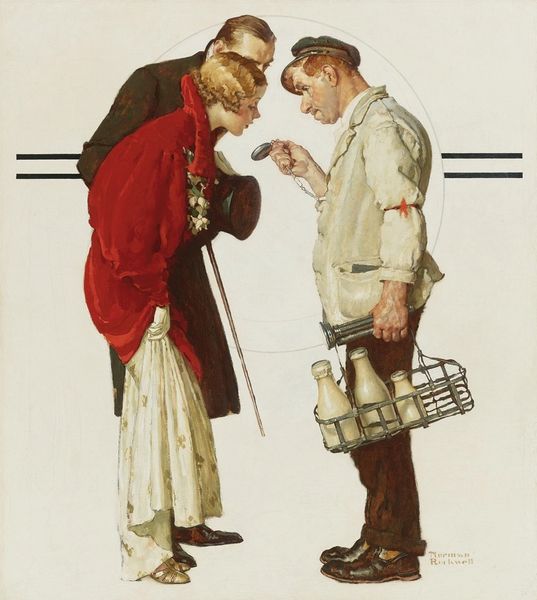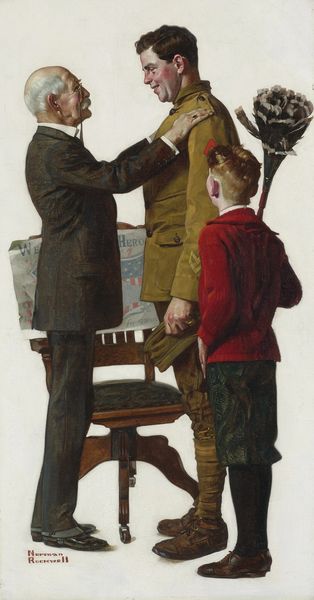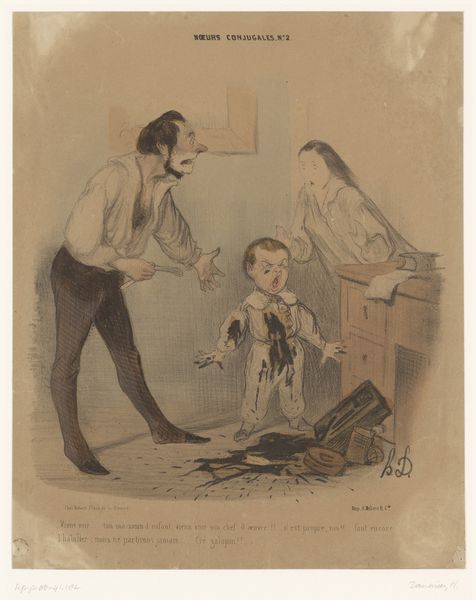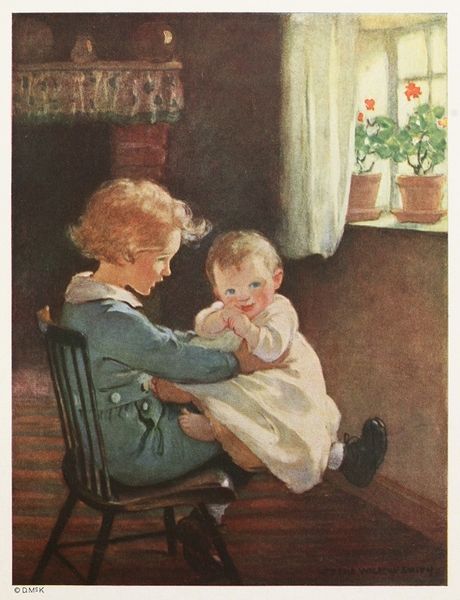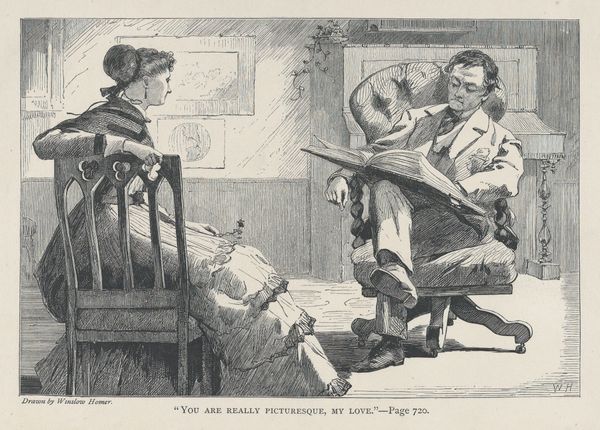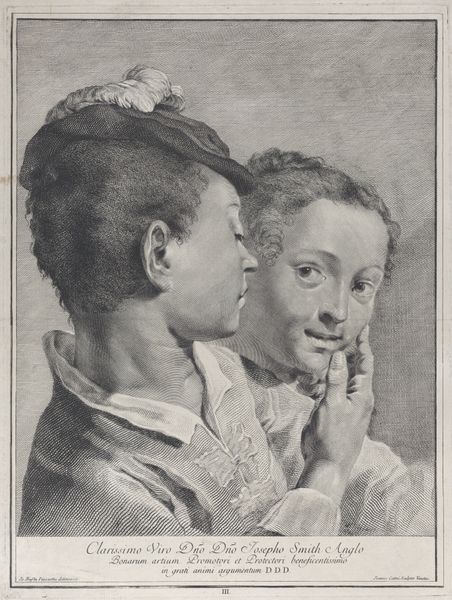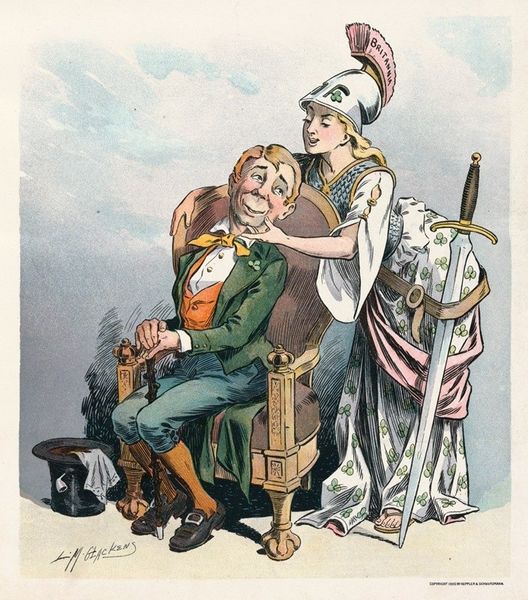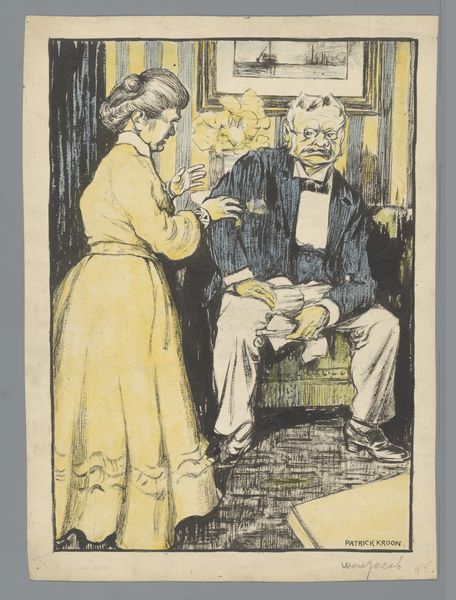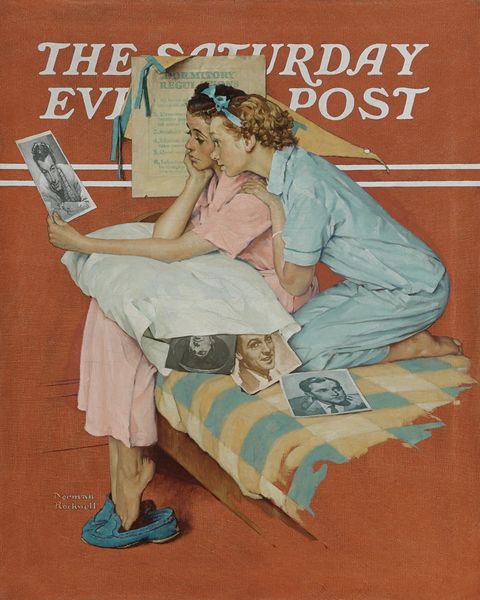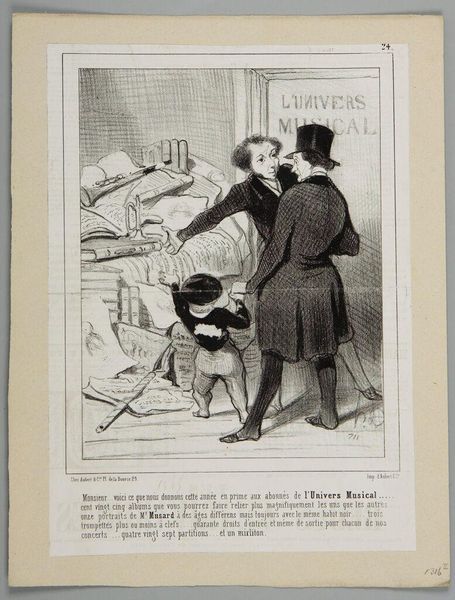
painting
#
portrait
#
painting
#
realism
Copyright: Modern Artists: Artvee
Editor: This is Norman Rockwell’s "My Mother," created in 1918. It’s a painting, seemingly a portrait. I’m struck by how ordinary it feels. It seems so everyday, yet there's a certain poignancy given the era. What stands out to you about this piece? Curator: Well, let's look at the knitting. Notice the very act of repetitive handwork. In 1918, what social class would likely have time and need to create textiles in this way? It points towards ideas around domestic labor and value. Consider the mass-produced photo that the soldier is holding. He seems so pleased by it! Why would he value a mass-produced and easily copied portrait of his mother over his *actual* mother sitting in front of him? What does the interplay between the knitted object, the photograph, and Rockwell's oil paint on canvas tell us about labour and authenticity? Editor: That's interesting; I hadn’t thought about the materials that way. So you are seeing social commentary on value in production and labor? Curator: Exactly. We often divorce the artist from social-political events and daily living by idealizing materials of high art! Is there not incredible labor in both activities -- mother at labor through knitting, while soldier holds manufactured portrait as some token, while Rockwell labored on this oil painting on canvas? I think it asks us to consider our valuation of labor -- from manufacturing all the way to Rockwell’s creation. Editor: That totally shifts my perspective. Seeing the labor in all of these objects--and understanding how that labor has very different social valuations–helps me appreciate the work on a new level. Curator: Right, exactly! And how Rockwell depicts it...the subtle narrative, with this material focus, changes the whole feel. Now, where does your eye go first?
Comments
No comments
Be the first to comment and join the conversation on the ultimate creative platform.
